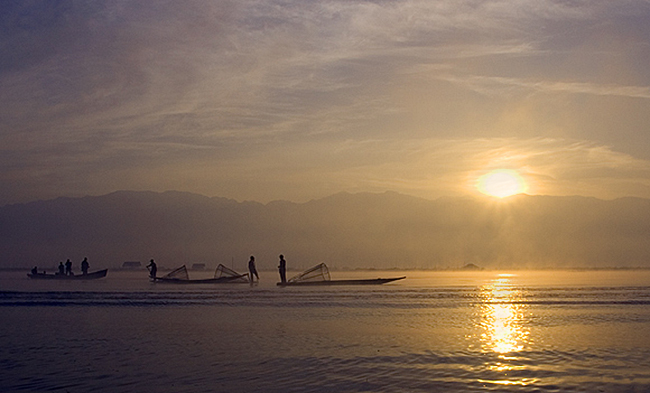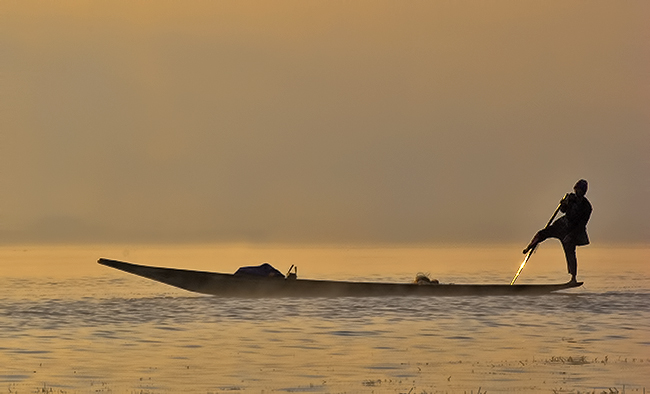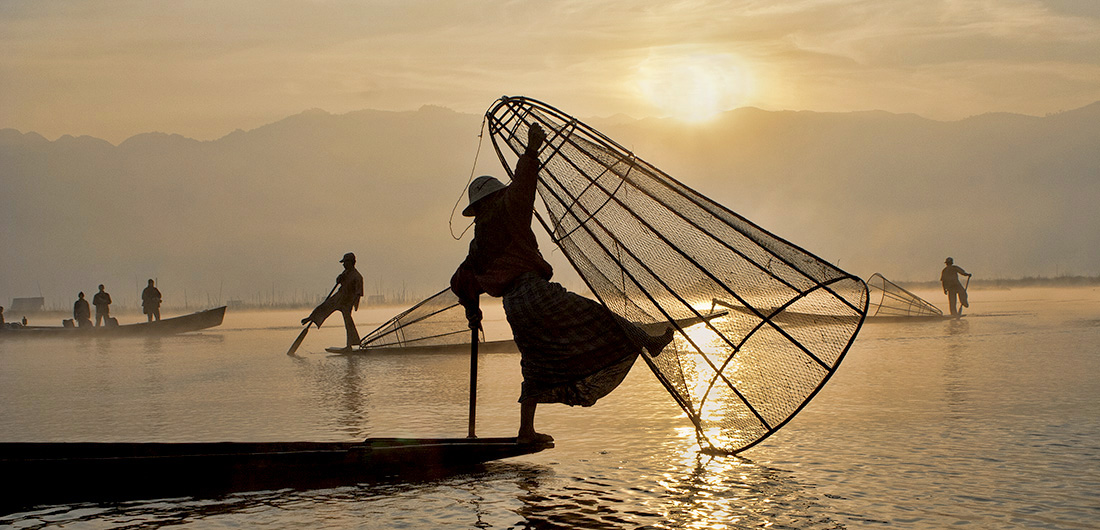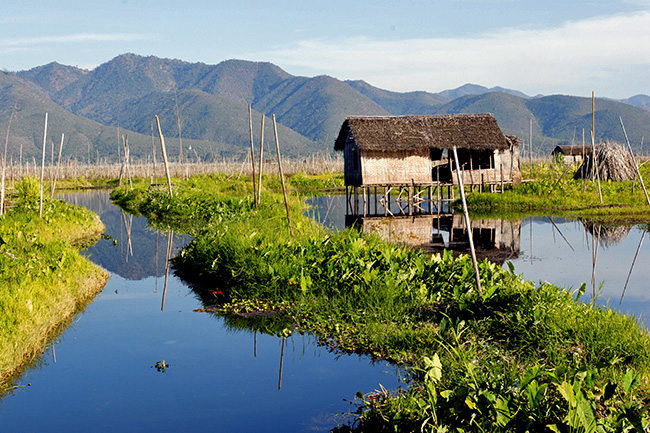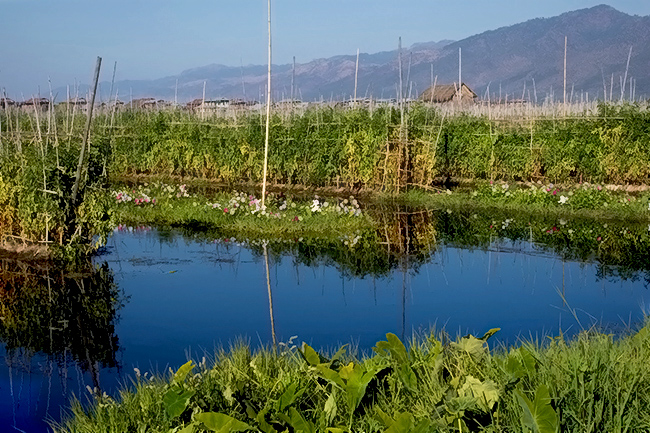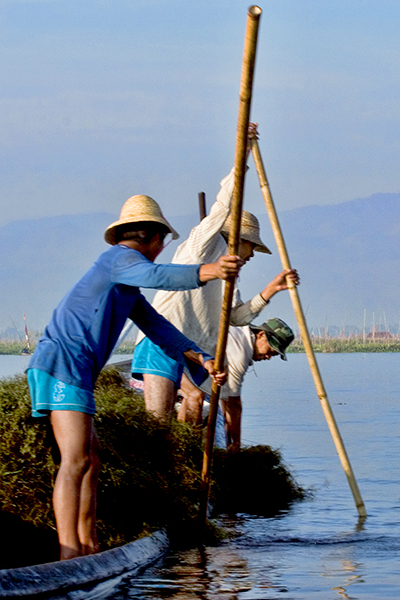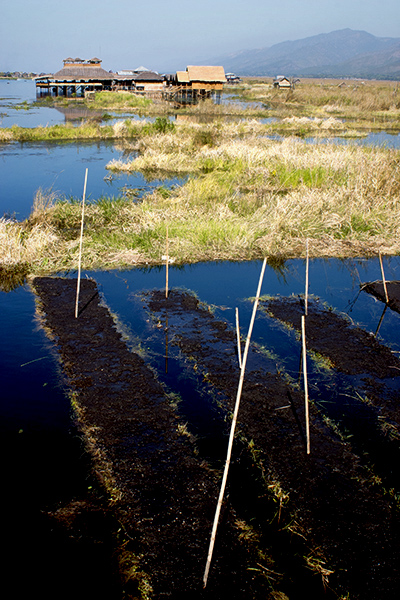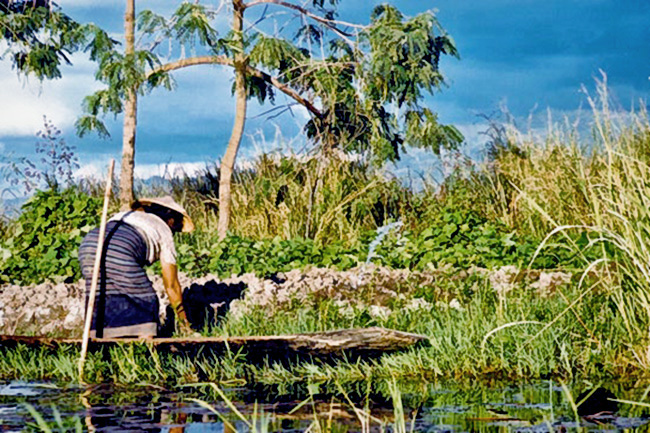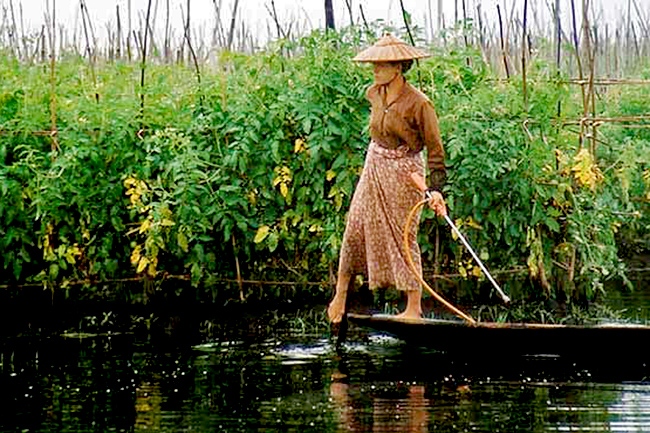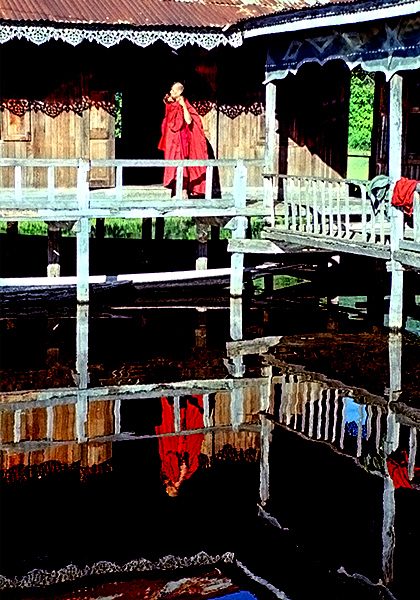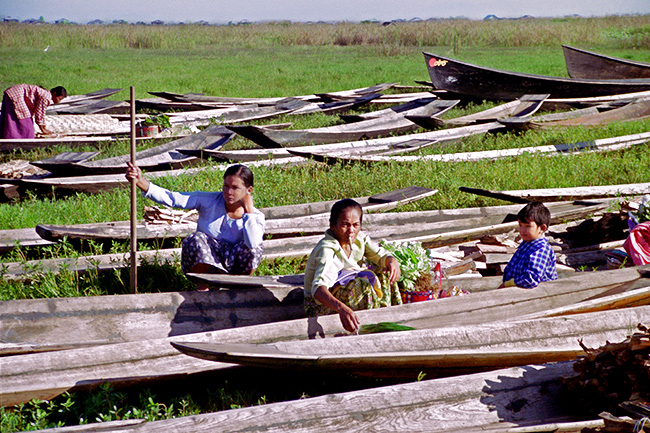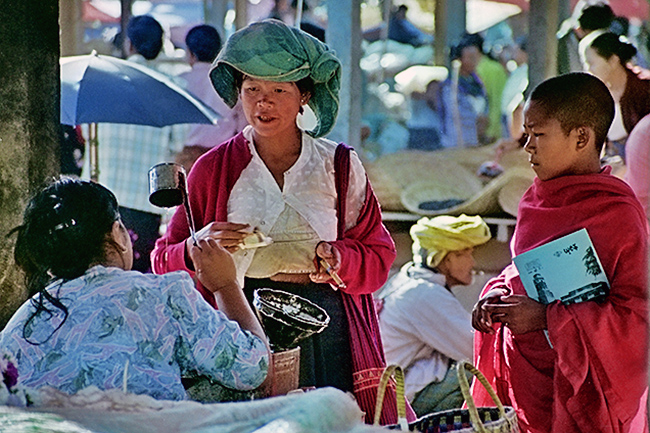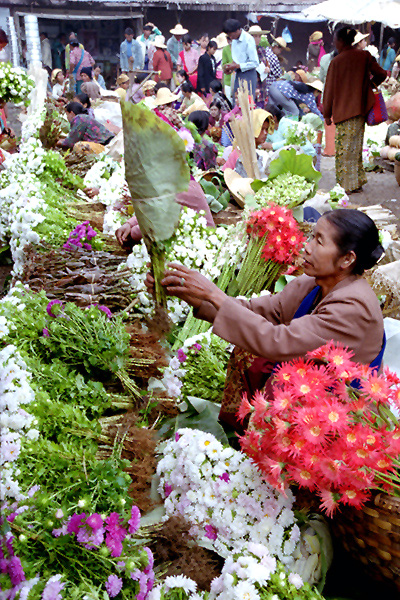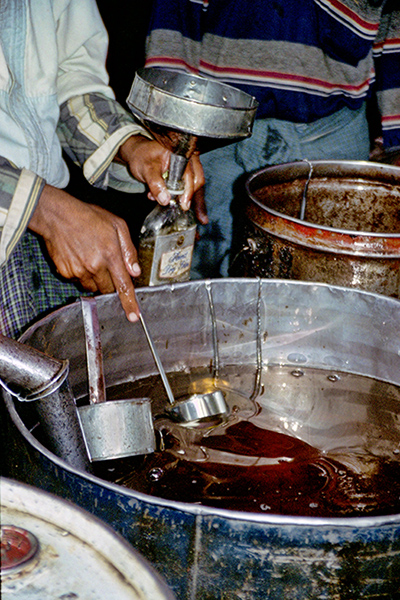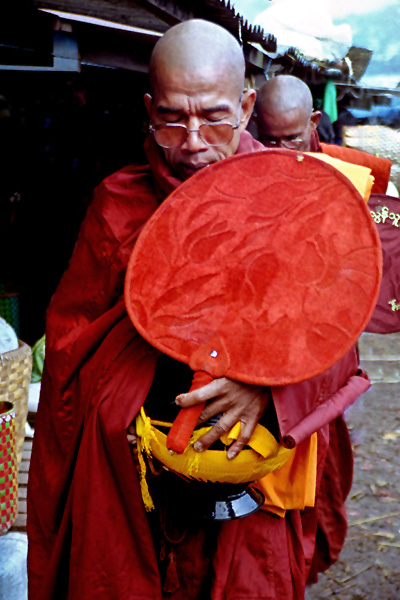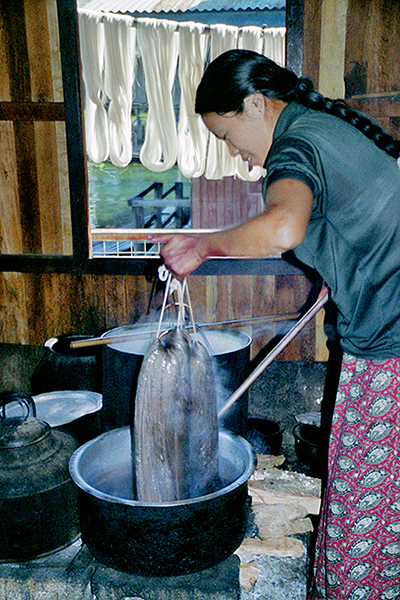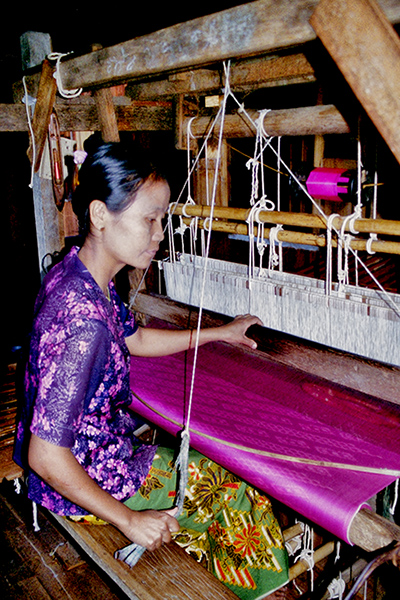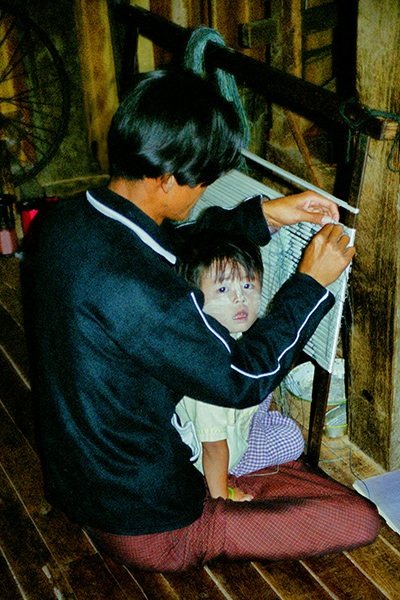|
The lake is almost 9.5 miles long and 3.5 miles wide.
Its open sheet of water is approximately 23 sq. miles. It's
very shallow, only about 12' at its deepest. A highlight of
a trip on the lake is to hire a boat and set off down the canal before
dawn. We hired Nyunt from Inle Glory, at our request he took us to
see the leg rowers at dawn and on a two day tour of the lake, stopping
to visit monasteries, pagodas, the unique floating gardens, workshops
and markets. It was chilly when we reached the open lake at 6.15am
on our first morning but we dressed in layers we could shed as the
day warmed up and an umbrella provided by Nyunt for shade, did double
duty as a wind break |
